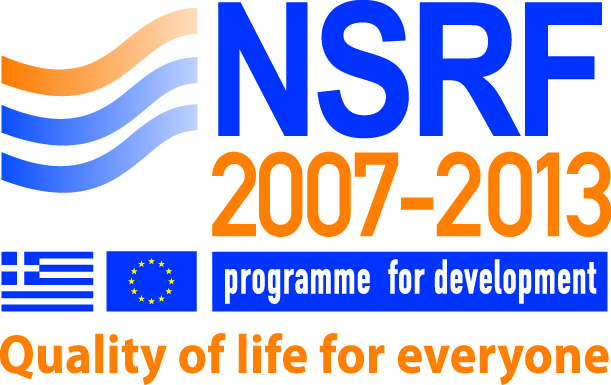Please use this identifier to cite or link to this item:
https://olympias.lib.uoi.gr/jspui/handle/123456789/39619Full metadata record
| DC Field | Value | Language |
|---|---|---|
| dc.contributor.author | Διαγγελάκη, Αγάπη | el |
| dc.date.accessioned | 2025-11-14T08:20:41Z | - |
| dc.date.available | 2025-11-14T08:20:41Z | - |
| dc.identifier.uri | https://olympias.lib.uoi.gr/jspui/handle/123456789/39619 | - |
| dc.rights | Attribution-NonCommercial-NoDerivs 3.0 United States | * |
| dc.rights.uri | http://creativecommons.org/licenses/by-nc-nd/3.0/us/ | * |
| dc.subject | Λαϊκή μουσική | el |
| dc.subject | Χάρις Αλεξίου | el |
| dc.subject | Τα Τσίλικα | |
| dc.title | " Τα Τσίλικα " - " Παλιά λαΪκά από το 1900 - 1945 ". Φωνητική ανάλυση της Χάρις Αλεξίου και καταγραφή παρτιτούρας. Θεωρητική και μουσικολογική προσέγγιση | el |
| heal.type | bachelorThesis | - |
| heal.type.en | Bachelor thesis | en |
| heal.type.el | Προπτυχιακή/Διπλωματική εργασία | el |
| heal.classification | Αλεξίου, Χάρις | - |
| heal.classification | Λαϊκή μουσική - Ελλάδα - ( 1900 - 1945 ) | - |
| heal.dateAvailable | 2025-11-14T08:21:41Z | - |
| heal.language | el | - |
| heal.access | free | - |
| heal.recordProvider | Πανεπιστήμιο Ιωαννίνων. Σχολή Μουσικών Σπουδών. Τμήμα Μουσικών Σπουδών | el |
| heal.publicationDate | 2025 | - |
| heal.abstract | Η παρούσα μελέτη εστιάζει σε επτά ηχογραφήσεις από τον δίσκο «Τα Τσίλικα – Παλιά λαϊκά από το 1900–1945» που κυκλοφόρησε το 1983, με ερμηνεύτρια την Χάρις Αλεξίου, με στόχο τη φωνητική τους ανάλυση και τη συγκριτική τους εξέταση με τις πρώτες εκτελέσεις. Επιδιώκεται η ανάδειξη των ερμηνευτικών ιδιαιτεροτήτων που προσδιορίζουν την καλλιτεχνική φυσιογνωμία των εκτελεστών, χωρίς αξιολογικές ιεραρχήσεις. Η ανάλυση λαμβάνει υπόψη παράγοντες όπως οι κοινωνικές και πολιτισμικές συνθήκες, οι όροι παραγωγής και οι τεχνολογικές δυνατότητες, δίνοντας ιδιαίτερη έμφαση σε τεχνικές και αισθητικές παραμέτρους. Αυτές εξετάζονται τόσο σε σχέση με τα δομικά χαρακτηριστικά των ηχογραφήσεων (στίχοι, δομή, ρυθμός, τροπικότητα, τονικότητα) όσο και με τα κριτήρια για τη φωνητική απόδοση (οργανολόγιο, διαχείριση αναπνοής, φωνητική τοποθέτηση, άρθρωση, διακοσμητικά στοιχεία, τέμπο). Το έργο της Χάρις Αλεξίου προσεγγίζεται μέσα από ένα συνοπτικό βιογραφικό σημείωμα και αναλύεται ο ρόλος της, καθώς και η συμβολή του συγκεκριμένου δίσκου στη διατήρηση και επανερμηνεία της πολιτισμικής ταυτότητας. Επιπλέον, αξιοποιούνται συνεντεύξεις και αφιερώματα που προσφέρουν σημαντικές πληροφορίες για την πρόσληψη των τραγουδιών από την ίδια την Χάρις Αλεξίου αλλά και από το κοινό. Μεθοδολογικά, η έρευνα βασίζεται στη μουσική καταγραφή με ευρωπαϊκή σημειογραφία, εμπλουτισμένη με ειδικά σύμβολα για την αποτύπωση ιδιαιτεροτήτων της ρεμπέτικης και παραδοσιακής μουσικής. Τέλος, συγκριτικά στοιχεία των εκτελέσεων καταγράφονται σε πίνακες, (διάρκεια τραγουδιού, ρυθμός / ταχύτητα (τέμπο), διαστηματική απόδοση, χορευτική απόδοση, φωνητική απόδοση, μουσική προσέγγιση, αμανές, προσφώνηση), συμβάλλοντας στην καλύτερη κατανόηση ανάμεσα στις πρώτες και τις μεταγενέστερες εκτελέσεις. | el |
| heal.abstract | This study focuses on seven recordings from the album «Ta Tsilika – Old Popular Songs from 1900–194» (1983), performed by Haris Alexiou, aiming at a detailed vocal analysis and a comparative examination with the earliest renditions. The research seeks to highlight the interpretative features that define the artistic identity of the performers, without establishing evaluative hierarchies. The analysis considers factors such as social and cultural conditions, production circumstances, and technological capabilities, placing particular emphasis on technical and aesthetic parameters. These are examined both in relation to the structural characteristics of the recordings (lyrics, structure, rhythm, modality, tonality) and to criteria for vocal performance (instrumentation, breath control, vocal placement, articulation, ornamentation, tempo). Haris Alexiou’s work is approached through a concise biographical note, analyzing her role and the contribution of this album to the preservation and reinterpretation of cultural identity. Additionally, interviews and tributes are utilized to provide insights into the reception of the songs by both Alexiou herself and the audience. Methodologically, the research is based on musical transcription using European notation, enriched with specialized symbols to capture the specificities of rebetiko and traditional music. Comparative data on the recordings are presented in tables (song duration, rhythm/tempo, intervallic accuracy, danceability, vocal performance, musical approach, amanes, phrasing), contributing to a clearer understanding of the differences between the original and later performances. | en |
| heal.advisorName | Ανδρίκος, Νικόλαος | el |
| heal.committeeMemberName | Σκούλιος, Μάρκος | el |
| heal.academicPublisher | Τμήμα Μουσικών Σπουδών | el |
| heal.academicPublisherID | uoi | - |
| heal.fullTextAvailability | true | - |
| Appears in Collections: | Προπτυχιακές εργασίες Τμ. Λαϊκής & Παραδοσιακής Μουσικής | |
Files in This Item:
| File | Description | Size | Format | |
|---|---|---|---|---|
| ΔΙΑΓΓΕΛΑΚΗ ΑΓΑΠΗ - ΜΟΥΣΙΚΩΝ ΣΠΟΥΔΩΝ.pdf | 2.79 MB | Adobe PDF | View/Open |
This item is licensed under a Creative Commons License





